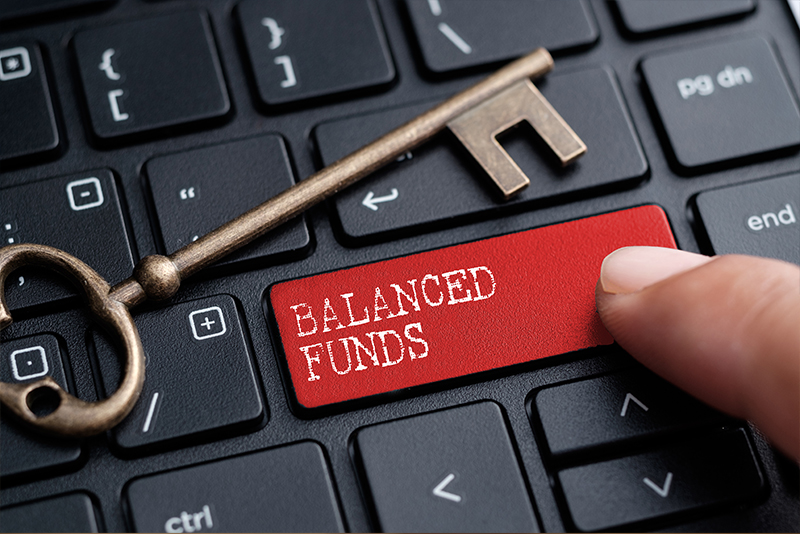4 MinsMarch 11, 2020
A Hybrid Fund, as the name suggests, invests in a mix of instruments, generally divided among those offering fixed and market linked returns. The debt or fixed income portion includes government bonds, corporate bonds, and money market instruments.
The risk-return trait of a Hybrid Fund lies in the allocation between equity and debt.

There are six sub-categories of a Hybrid Fund as defined by the capital market regulator, namely:
1. Balanced hybrid/Aggressive hybrid
2. Conservative hybrid
3. Dynamic asset allocation or balanced advantage
4. Multi-asset allocation
5. Arbitrage
6. Equity savings
A Balanced Hybrid Fund invests around 40% to 60% of total assets in equities and the balance in debt instruments. From an asset allocation standpoint, the portfolio is well-balanced between equity and debt instruments. So, a Balanced Hybrid Fund
cannot qualify as equity-oriented or debt-oriented. It stands true to its name ‘balanced’ while taking exposure to equity and debt securities. The fund is not permitted to generate returns based merely on the price differential
between the equity and debt instruments.
If the Hybrid Fund takes a greater exposure to equity-and-equity related instruments, that is, invests between 65% and 80% of its total assets and the balance in debt & money market instruments, then it will be defined as an Aggressive Hybrid
Fund due to the portfolio being skewed towards equities. As per SEBI regulations, mutual fund houses are permitted to offer either an Aggressive Hybrid fund or a Balanced Hybrid
Fund.
What is the broader investment objective of a Balanced Hybrid Fund?
A Balanced Hybrid Fund broadly aims to provide investors with the best of both worlds – capital appreciation from equity assets and a cushion from the likely volatility of equity markets from the debt portion. This provides a fair balance
between risk and returns.
Does a Balanced Fund help sail through tough and volatile equity markets?
To an extent it does. But it depends on the fund’s asset allocation at that time and the fund manager’s skill and ability in handling the portfolio.
Also Read: [All You Need To Know About Types of Mutual Funds]
How is a Balanced Hybrid Fund placed on the risk-return spectrum?
A Balanced Hybrid Fund carries moderate-to-high risk, depending on how the fund/scheme allocates its assets and the underlying portfolio characteristics.
While choosing a Balanced Hybrid Fund consider parameters such as returns, risk-ratios, performance across market phases (i.e. bull and bear phases), expense ratio of the scheme, portfolio characteristics, fund manager’s experience, the
number of schemes handled by the fund manager, the track record of mutual fund scheme/s under his/her watch, and investment process and systems followed at the mutual fund house, among others. This could help minimise the risk and optimise
returns.
Who should consider investing in a Balanced Hybrid Fund?
If you are looking at growth and stability by balancing risk, the Balanced Hybrid Fund is suitable. It would provide you with an almost equal balance between equity and debt. Invest in it if you wish to tactically allocate your investible surplus
and are a moderate-to-high risk-taker, provided your investment time horizon is at least 5 years.
Six key benefits of investing in Balanced Hybrid Fund:
• Tactical asset allocation across equity and debt
• Diversification, which is one of the basic tenets of investing
• Limits the downside risk
• Enables wealth-creation
• Earns decent inflation-adjusted returns (provided you choose the scheme prudently)
• Facilitates planning for long-term financial goals
A Balanced Hybrid Fund is a worthy proposition if you are new to mutual funds. You could invest a lump sum or via Systematic Investment Plans (SIPs) or Systematic Transfer Plan (STP).
However, before you invest consider your broader investment objective, risk profile, the financial goals being addressed, and the time horizon before the envisioned goals befall.
Disclaimer: This article has been authored by PersonalFN, a Mumbai based Financial Planning and Mutual Fund research firm. Axis Bank doesn't influence any views of the author in any way. Axis Bank & PersonalFN shall not be responsible for any direct / indirect loss or liability incurred by the reader for taking any financial decisions based on the contents and information. Please consult your financial advisor before making any financial decision.











